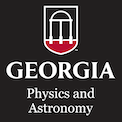Debris disk stars are the workshops for planetary formation and evolution and excess emission in the infrared serves as the signpost. The disk of tenuous dust surrounds a main-sequence star analogous to our own Solar System. The goal of this study is to understand the evolution of the star in relation to the circumstellar dust through an unprecedented number of sources since there exist a plethora of theories with weak statistical influence.
A comprehensive collection of stars which display infrared excess were first compiled from many published studies over the past three decades. Concurrent to the literature sources, a new search for excess using the recent release of the AllWISE catalog assembled an extensive catalog of stars. The development of algorithms to identify and exclude stars masquerading as infrared excess emission ensured the highest fidelity that these stars host a debris disk.
Unanswered questions regarding relationships between a star and it's circumstellar material include evolution, angular momentum, the amount of metals contained in the star, as well as whether or not the star has a companion. In order to begin to address these claims, a large number of debris disk stars with reliable stellar parameters is needed. Archival optical spectroscopy and new observations for over 500 stars obtained many stellar parameters in- cluding rotational velocity, equivalent width of Hα and Li 6708Å, radial velocity, metallicity, activity indicators (Ca II H & K), and age. This investigation sought confirmation of the nature in which infrared excess decays over time and if there are observational signatures to confirm the idea that a stellar companion is expected to disrupt the star's ability to host a debris disk. In addition, the search for stars with debris disks offered an ideal sample to investigate the unanswered questions of whether a large stellar metal content inherently produces a large amount of circumstellar material that is ideal for planet formation or whether there is a direct connection between the debris disk and the stellar rotation where the disk serves as a means to remove angular momentum from the host star. The comprehensive catalog of debris disk stars confirms the nature of the evolution as dust decreases over time, but negated assertions regarding rotation, metallicity, and multiplicity of the star as primary influences on the dustiness of a disk alone. Thus, this work suggests that collisional grinding accounts for the main method of dust production and the initiator of these collisions must be tied to planetary evolution.
Index words: Main Sequence Stars, Infrared Astronomy, Circumstellar Disks


